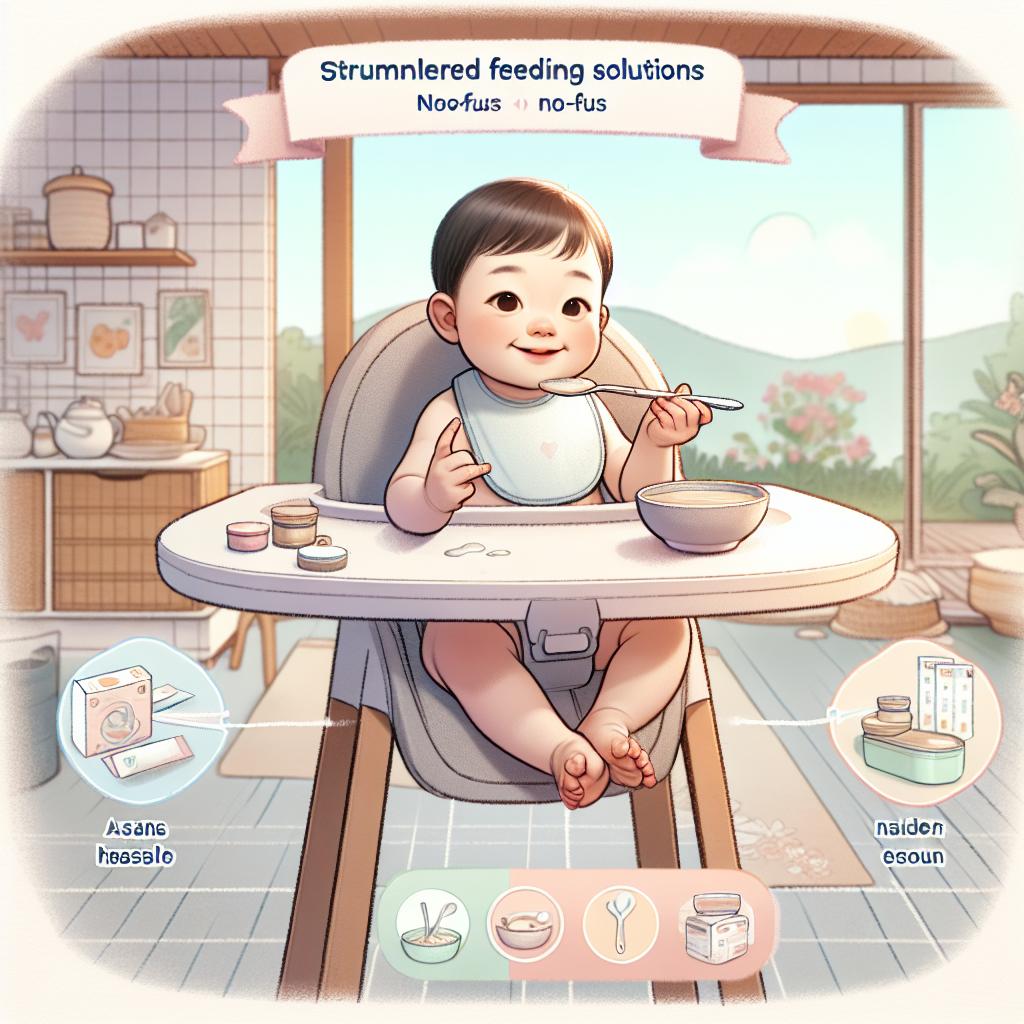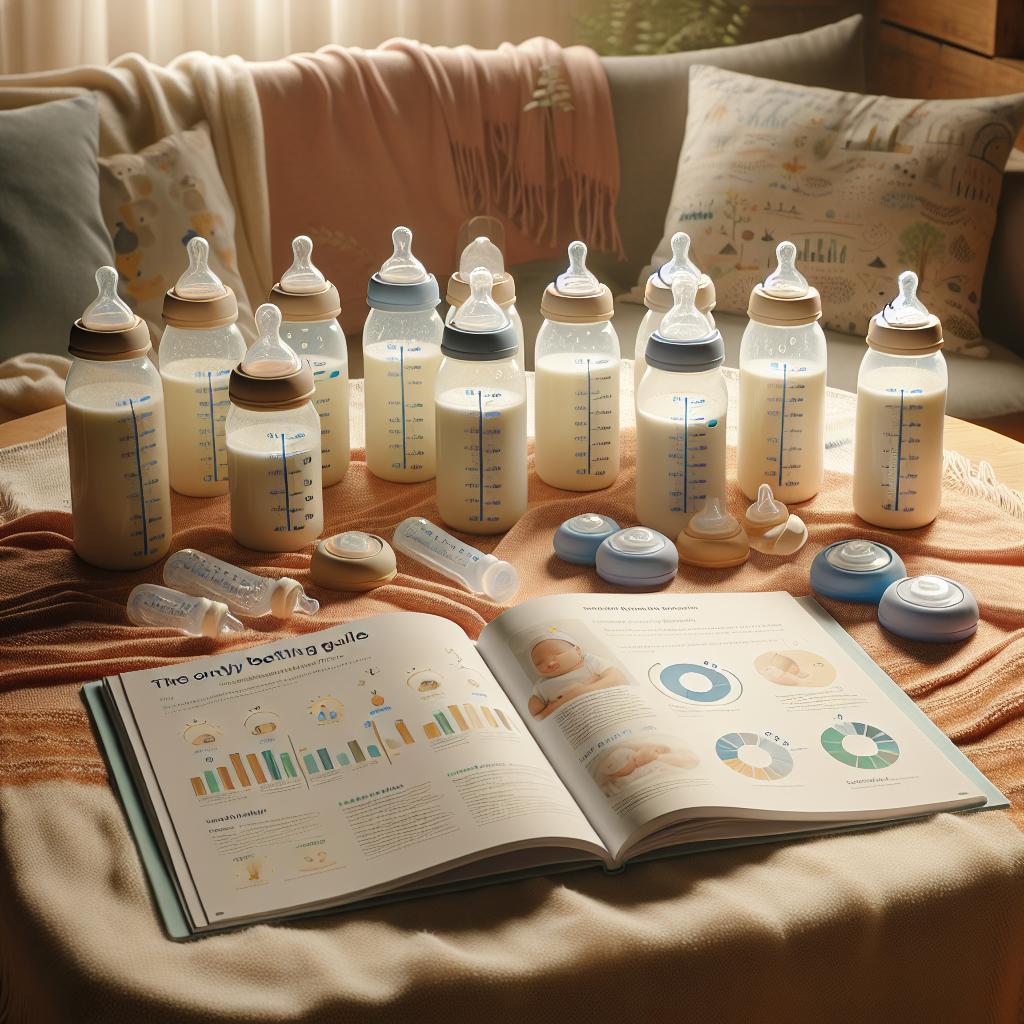The Key to a Happy Baby is a Happy Tummy
In the quest to create a happy, fuss-free feeding environment for your little one, you may have been confronted with countless choices. Bottles, teething rings, sterilization methods, not to mention the nutritional considerations! But fear not, because we are here to walk you through our no fuss feeding guide. You’ll discover simple yet effective ways to keep your baby not only satisfied, but blissfully content during feeding times.
Biomimetics: The Magic in No Fuss Feeding
Biomimetic design has become a game-changer in many fields and the world of baby-feeding products is no exception. The innovative concept essentially involves taking inspiration from the natural world and applying it to the design of everyday products. With regards to feeding, this means creating bottles that mimic the shape, feel, and function of a mother’s breast, providing a more natural and comfortable feeding experience for the baby.
In the realm of baby-feeding products, the magic of biomimetics lies in creating a pleasant and familiar environment that helps to keep the baby calm and content. This not only leads to a happier baby but also a smoother feeding time for parents.
Moreover, biomimetic design can also help babies in their transition from breastfeeding to bottle-feeding. With bottles designed to mimic the breastfeeding experience, babies will find the shift much easier and feeding times a lot less stressful.
Transform Feeding Time with Nutritious Homemade Baby Food
While the feeding tool is important, the food that goes into it is equally critical. Introducing your baby to a variety of foods from a young age will help them develop a diverse palate and ensure they receive a broad spectrum of nutrients. This is where preparing homemade meals comes in handy.
Why should you consider homemade baby food?
- Control over ingredients: You know exactly what goes into your baby’s meal. This can be particularly useful for managing allergies and ensuring high-quality nutrition.
- Introducing variety: It can be fun and rewarding to create new and exciting meals for your baby, and it also encourages them to try a wide array of flavors.
- Cost-effective: Preparing your own baby food can also be a great way to save money in the long run, all while providing superior nutrition for your little one.
If you’re unsure where to start, there are plenty of wonderful resources available. For example, Melissa Clark’s range of cookbooks offer baby-friendly recipes, while the New York Times’ food section publishes creative and nutritious recipes that can easily be adapted for babies.
Creating a Happy Feeding Environment
Remember, feeding time is not just about nutrition. It also provides an opportunity for bonding and learning. Transforming your feeding routine from a chore into a meaningful interaction can greatly contribute to a smooth feeding process. Moreover, keeping the environment relaxed and positive will in turn keep your baby calm and content.
With a little bit of planning and the right approach, feeding time can become a delightful and enriching experience for both you and your baby – a time of connection, nourishment, and yes, even magic!
Avoiding Fussy Nights by Easing Digestive Problems
Late-night crying spells often indicate that the baby is experiencing discomfort or pain. One of the most common reasons for this distress is a digestive problem such as colic, gas, or reflux. Fortunately, there are proven strategies to deal with these issues.
Here are some simple solutions to prevent digestive problems:
- Using a biomimetic bottle to ensure the baby takes in less air while feeding.
- Regular and gentle burping during and after each feeding to help expel swallowed air.
- Making sure the baby is sitting upright during feeding sessions and for at least 20 minutes afterwards to lessen reflux.
The Importance of Bottle Sterilization
An essential aspect of no fuss feeding is the regular and thorough sterilizing of the baby’s bottles and feeding equipment. This is to ensure that your baby is protected from bacteria and viruses that can cause illness. Using a high-quality sterilizer that can kill 99.9% of harmful germs ensures peace of mind with each feed.
Sterilization is particularly important for balls, teats, and other equipment that are used regularly and come into contact with the baby’s mouth. These objects are a breeding ground for microbes, so sterilizing them frequently is essential to ensure your baby’s health and safety.
According to Experts: The Right Approach to Introduce Solids
Introducing solids is a critical milestone in your baby’s feeding journey. This transition should be done gradually and with the guidance of your pediatrician and the nutritional recommendations set by health experts.
To make this transition smoother for your baby, choose easily digestible foods that are rich in iron such as pureed fruits and vegetables. Gradually introduce protein and other nutrients. There is also no need to shy away from flavor! Herbs and mild spices can make homemade baby foods even more intriguing for your young gourmet in training.
Here are a few more tips:
- Start with small amounts of solids – one to two spoons per meal.
- Always have some previously accepted nutrition ready, just in case.
- Be patient with mess and rejected meals, and respond calmly to spit-outs.
The Joy of Homemade Snacks
As your baby grows older, introducing healthy snacks is another component of a well-rounded feeding plan. Creating a no fuss pastry cream at home is a delightful and healthier alternative to store-bought snacks. Homemade snacks give you control over the ingredients and offering a variety of textures and flavors helps your baby to develop their taste buds.
You now have a comprehensive no fuss feeding guide in hand. Incorporating these strategies will surely create a peaceful, healthy, and efficient feeding routine for you and your baby. Happy feeding to all the lovely mummies and daddies out there!







